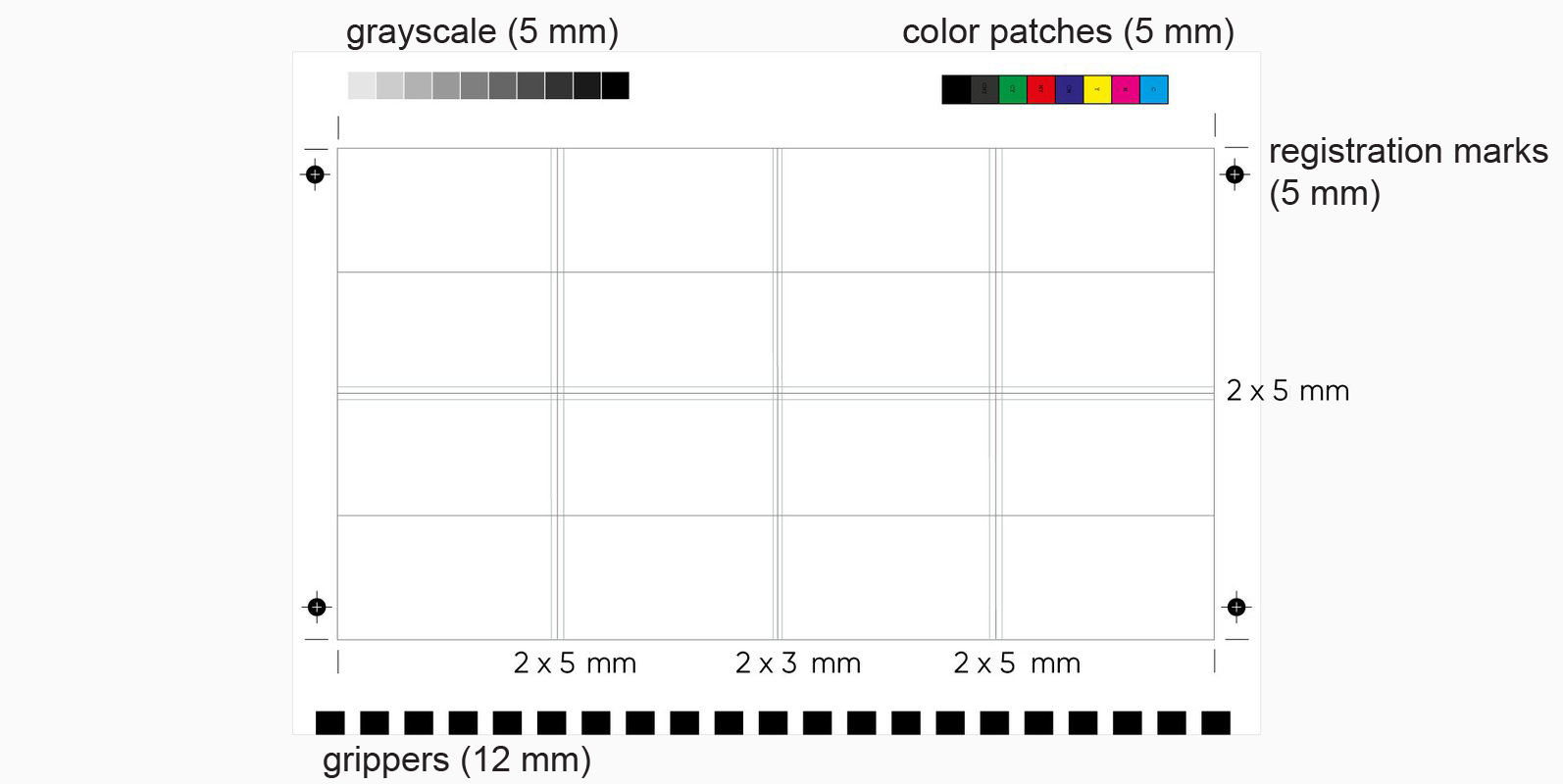B4, A4 or A5? What parameters should you consider when choosing the format for your next publication?
Article by Michał Büthner-Zawadzki, Business Developer Arctic Paper Polska.
When designing a publication, one of the most important decisions we make is its format. It might seem that the choice is mainly functional and aesthetic, which influences its thickness, ease of opening the publications and the role it should play (e.g. album format of a book), as well as its final look and proportions.
Robert Bringhurst in his “The Elements of Typographic Style” devotes a whole separate chapter to the designing of a page – its format and proportion. Interestingly, the formats described in the ISO 216 standard, i.e. the conventionally used in the printing industry the A and B sizes, are, according to the author, the least harmonious among the most important page formats. An undeniable advantage is the fact that the sheet of 1: √2 proportions when folded in half gives us a sheet of the same proportion.

Paper sheets – ISO or other formats?
The A3, A4 and A5 sizes can be found in notebooks, sketchpads, office printing papers, etc. These are the optimum formats using standard paper sheets available in commerce, therefore justified economically. However, in more elegant books and publications the ISO formats are hardly used. This is probably because designers, people who have an artistic soul, often even subconsciously sense their dissonance.
A question may be posed: which formats are more economical than others are and which should we pay attention to while designing a publication? Here Mr. Printing Man or Mrs. Printing Woman come to the rescue. If they insists on designing, everything in ISO formats – we might want to look for another printing house.
Theoretically, we are capable of printing a publication in any format, as long as we have paper in proper size at our disposal. The paper for a given format can be ordered at a manufacturer’s and it is the most commonly applied and economical solution. The amount can be a certain obstacle – usually it is minimum 1-3 tons and the waiting time for the paper from production – usually up to 3-4 weeks.
If the volume and the press run are insufficient or its printing should take place in a week, we should use commonly available, standard paper formats. Usually we will find in offer the following formats: 610 x 860 mm (RA1), 630 x 880 mm (A1+), 640 x 900 mm (SRA1), 700 x 1000 mm (B1), and sometimes even 720 x 1020 mm (RB1). Additionally, there are half-size sheets 450 x 640 mm and 460 x 640 mm.

The signatures, the imposition – what is it?
Let us assume that we are designing a colourful catalogue in a simple thread sewn binding. Our publication will be printed out in the form of signatures, which will be gathered into a block, sewn and glued, and bound into a cover. Usually, the printing house uses 16-page or 32-page signatures. Unfortunately, not always the number of pages in the book can be divided by 16 and the printing house has to rely on 8-page and 4-page signatures. The signatures are created during electric montage called the imposition.
When choosing the right format for our catalogue we should check on which printing sheet we can plan it. We should bear in mind that we cannot use the entire surface area of the sheet. A part of it will be used by the printing house. What for? 12 mm for grippers which will hold the sheet by its longer side and transport it through the following printing units. 5 mm for colour patches (for colourful printing) or grayscale (for monochrome printing) for control of paint optical density. 3 mm for bleeds. These shall be taken from the shorter side, which will amount to 23 mm. From the longer side, 5 mm will be taken by registration marks and 3 mm by bleeds. Altogether 16 mm. But that’s not all. After gluing of the cover, the block of our catalogue will be cut from three sides on a three-knife cutter. Usually it takes ca 5 mm. This is why the pages on the sheet in the cutting point should be separated by 10 mm. If we place two signatures, they should be separated by bleeds – it takes another 6 mm.

Let us assume that the catalogue is to have a format similar to that of B5. Let’s try to calculate the maximum format of publication which can be placed on the B1 sheet, which is 700 x 1000 mm. We should be able to squeeze in two 16-page signatures. After taking into account and subtracting all the previously described elements and rounding down to full units, we will arrive at a B5 nett format with the size of 166 x 239 mm.
Such calculations can be made analogously for the remaining printing formats. It will help us create a catalogue of “economical formats”. When searching for a format, let us focus on its proportion on the basis of which we can calculate the size of publication that fits in one of the economical formats.

What if we skipped the planning part and designed a catalogue for our client in the 168 x 240 mm format? If the printing house manages to buy the paper which we chose (we or the client) in the 720 x 1020 mm format – we can consider ourselves lucky – the use of paper will rise only by ca. 5%. Else the printer will have to put one 16-page signature on RA1 sheet: 610 x 860 mm. It will result in a significant paper waste. Let us calculate how big.
We will need the following assumptions: folder volume – 320 pages, press run – 3000 copies, paper of 100 g/m² grammage.
Folder in a 168 x 240 mm format
• 1 16-page signature on a RA1 sheet
• 1 folder: 20 RA1 sheets
• 3000 folders: 60 000 RA1 sheets
• Paper amount: 60 000 x 0.5246 m² x 100 g/m² = 3148 kg
Folder in a 166x239 mm format
• 2 16-page signatures on a B1 sheet
• 1 folder: 10 B1 sheets
• 3000 folders: 30 000 B1 sheets
• Paper amount: 30 000 x 0.7 m² x 100 g/m² = 2100 kg

The printing of a folder in 168 x 240 mm format from the RA1 sheet will consume 50% more paper. In this case if we take an average paper price EUR 1/kg, the price will rise by ca EUR 1050. We should also add the cost of twice as many offset plates and twice as long printing time. The press run can be also bigger and paper can be more expensive.
The aforementioned situation is just a theoretical example which will help us illustrate the issue of format economy. In practice, the number of factors which influence the imposition and in turn, the paper format is much higher. Depending on the amount and format of pages, cover type, paper type, folding machine parameters, the imposition of the same publication can be done in many different ways. For square-like formats, the 12-page signatures are used. The calculations of a nett sheet will look a bit differently when printed on half-size machines - we print on a smaller sheet, but the size of elements used by the printing house is the same, so they will take more space on the sheet, percentage-wise. In monochrome work we do not place registration marks, and if our publication does not contain any graphic elements which reach the cutting line - we can give up on some of the bleeds.
This is why it’s good to have a friendly Mr. Printing Man or Mrs. Printing Woman with whom we can consult our project ideas, not only the ones related to the format. The communication between client, designer and the printing house in the early stages of work planning can help us avoid many problems in production which can sometimes turn out to be quite costly. Therefore, at the earliest possibility we shall talk to the printer about the printing project, to find a common ground.
Get into paper
If you want to discuss the choice of paper, get paper samples sent to you or need other technical support, just contact your local Arctic Paper sales office.